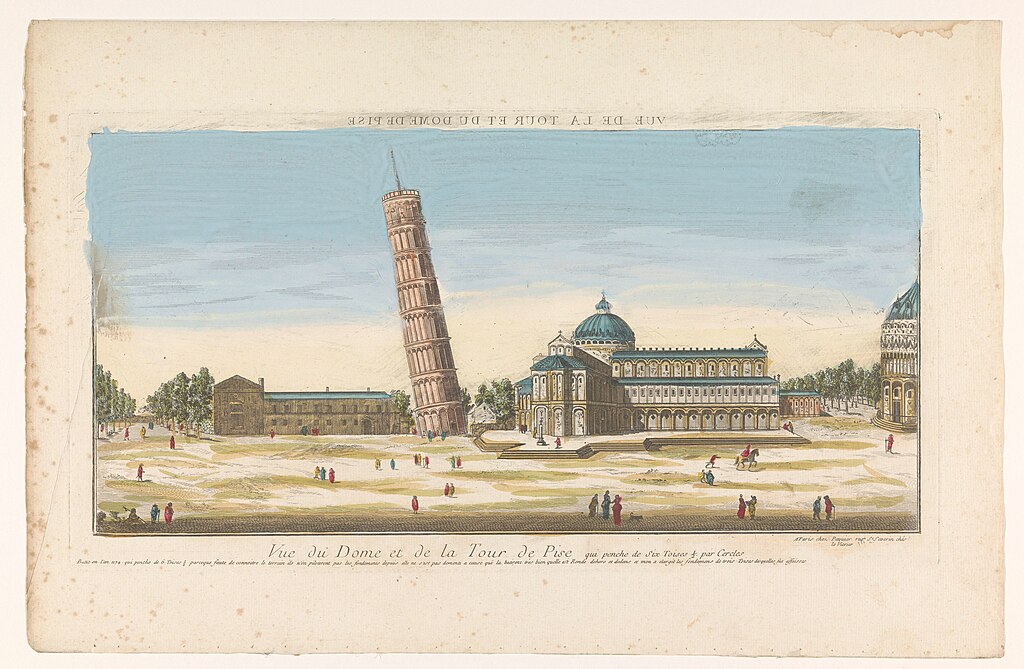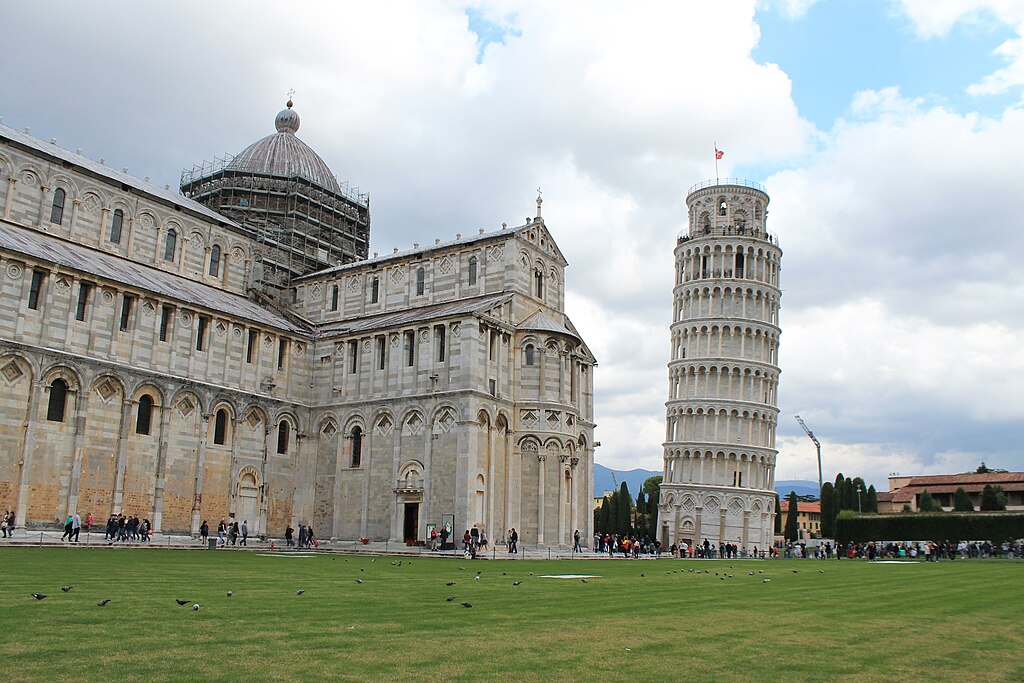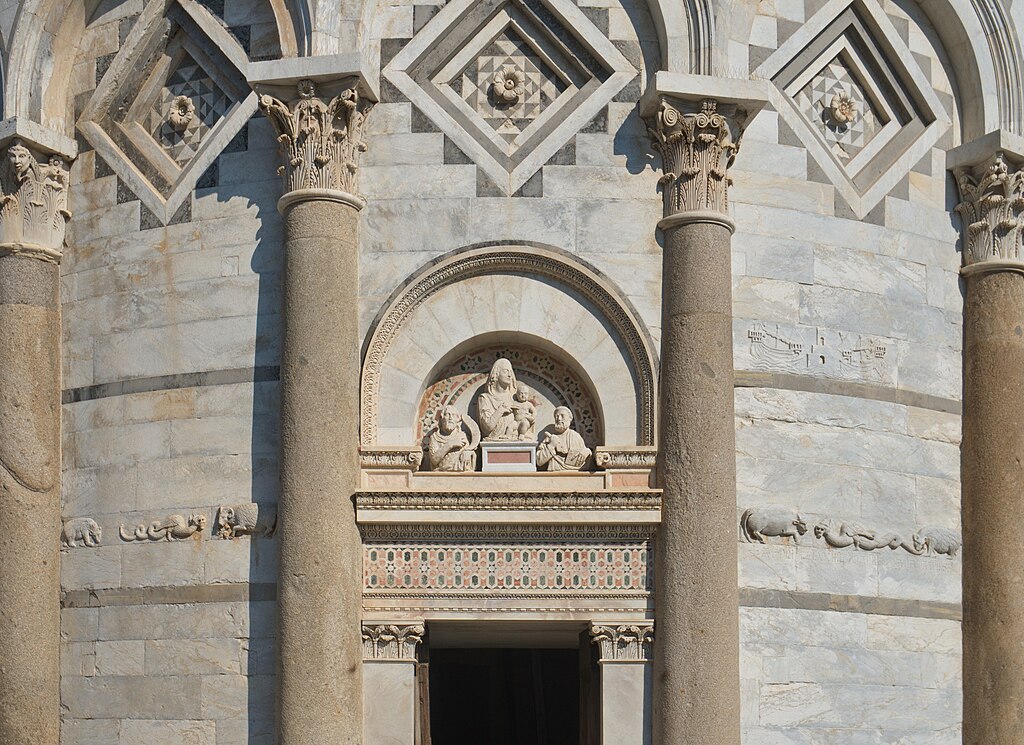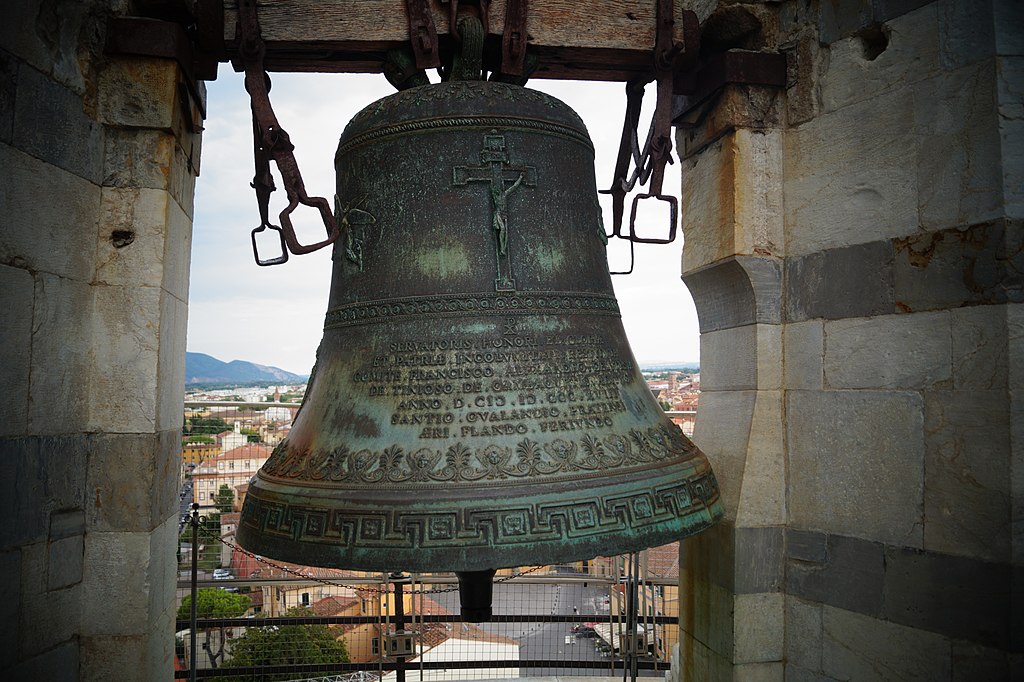Anyone traveling through northern Tuscany will eventually wonder: Why is the Pisa Tower leaning? Seeing it in person reveals more than photos ever could. The structure seems impossibly tilted, yet stubbornly upright — a paradox of balance and beauty. What began as a proud bell tower for Pisa’s cathedral has become a global curiosity, its lean both its flaw and fame.
Medieval Plans and Unexpected Ground
Construction of the Torre Pendente di Pisa began in 1173 as part of the grand cathedral complex in Piazza dei Miracoli. While the architect remains uncertain, many attribute the design to Bonanno Pisano. The builders intended the tower to stand perfectly straight, serving as a free-standing campanile. However, after completing just three stories, the soft subsoil — a mix of clay, sand, and silt — started to shift. The crew halted work for nearly a century. This unexpected pause let the ground settle, which likely prevented a total collapse. When construction resumed, they finished the tower in 1372, already marked by its distinctive tilt.

Why the Lean Never Vanished
The tower’s famous lean was caused by uneven sinking of its foundations. Its base lies just three meters deep, insufficient for Pisa’s unstable ground. As the weight increased with each level, one side began to sink. Attempts to correct the tilt during construction — by building upper floors taller on one side — gave the tower its banana-like curve. Over the centuries, engineers have made careful adjustments to stabilize it, using counterweights, soil extraction, and underground reinforcements. Despite these efforts, the lean persists, frozen at about four degrees since the most recent stabilization in 2001.

Details Beyond the Tilt
Beyond its famous slant, the tower is a finely carved example of Romanesque architecture. White marble arches wrap around each tier, supported by elegant columns with intricate capitals. Visitors who circle its base will notice sculpted reliefs and intarsia patterns, many of which mirror motifs found on the cathedral itself. Though tourists often focus on the lean, these artistic flourishes reveal the original intent: a structure of religious and civic pride, not a curiosity.

The View From the Bells
Climbing the 294 steps to the top brings not only vertigo but reward. The belfry contains seven bells, each tuned to a musical note. From the summit, Pisa’s red rooftops stretch toward the Arno River, and on a clear day, glimpses of the Apuan Alps break the horizon. The largest bell, L’Assunta, once rang to signal public events — today, it stands mostly silent, except for guided visits. Despite its lean, the tower has endured storms, invasions, and centuries of shifting ground.

Lasting Legacy of Pisa’s Leaning Tower
So, why is the Pisa Tower leaning? The answer lies in imperfect soil and persistence. Instead of tearing it down or correcting it entirely, Pisa embraced its architectural flaw — and in doing so, created one of Italy’s most recognizable landmarks. Those exploring the Tuscan countryside may also enjoy nearby regions like Puglia, Emilia-Romagna, or Tuscany itself for further inspiration.
For more detailed studies and preservation efforts, see the official site of the Opera della Primaziale Pisana or background on Italian architectural restoration at beniculturali.it.


